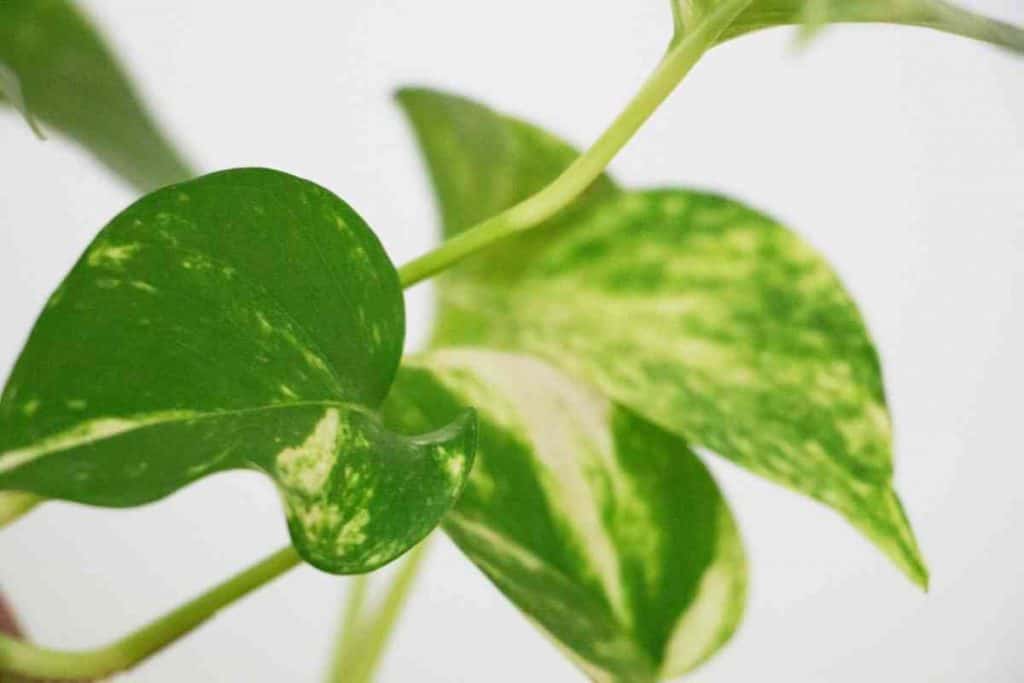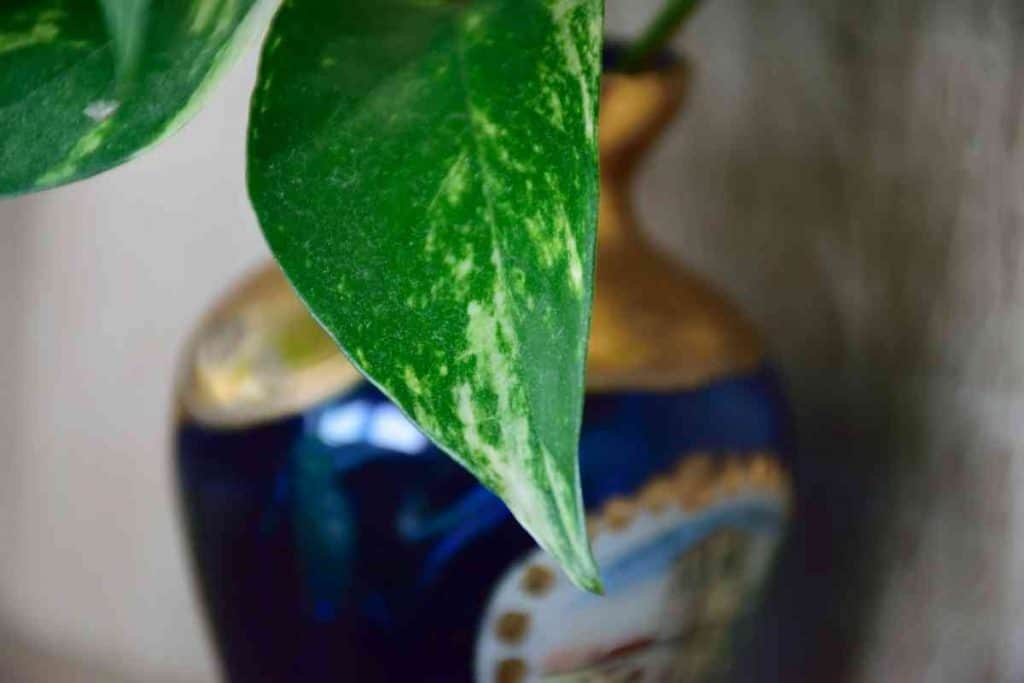The Cebu Blue Pathos (Epipremnum Pinnatum) is a beautiful, easy to care for houseplant that you should consider having in your home. Unlike most delicate indoor plants, Cebu blue pothos requires less attention, which is why it’s loved by many.
Interestingly, the plant can thrive well both outdoors and indoors. It's a very attractive plant that would fit right into your collections for sight-worthy ornamental houseplants.
Compared to other plants, the Cebu blue pothos does not have any complicated care requirements. The plant, however, has some basic requirements that could be easily met.
In this post, we looked at the essential Cebu blue pothos care and growth tips!
Table of Contents
What is Cebu Blue Pothos?
But anything else, let's consider what Cebu blue pothos is? How can you identify them? And, what makes the Cebu blue pothos plant special?
Here's what we've uncovered for you:
The Cebu blue pothos belongs to the family of Araceae and the genus Epipremnum. It's a climbing vine that grows astonishingly long in its moist natural habitat.
However, it can be cultivated as an indoor plant, which would limit their ability to grow as long as they do in their natural habitat.
The Cebu blue pothos has a slime shiny silvery-blue leaf that can sparkle under certain lighting conditions. The plant is referred to as “A Pothos”, given their association to the genus Epipremnum.
It's a native climber of the Philippines and might have got a part of its name from the local Philippine dialect. Naturally, the plants can be found as climbers of native perennial vines trees.
While it can grow up to 40 feet long when grown outdoors in its natural habitat, it only grows a few feet tall (usually less than 10 feet) when it grows behind closed doors.
The Cebu blue pothos goes by many names, including; centipede tongavine, Devils Ivy, Dragon-tail Plant, Schindapsus Aureum, and Blue Pothos.
The Cebu blue pothos can trail, climb or crawl vines of trees, but they are a great addition to your indoor plant collection.
This plant loves humidity but also thrives well in low humidity and lighting conditions. You'd find how to tweak your environment to give the plant exactly what it needs to survive.
Read Also: Manjula Pothos Vs Marble Queen
Is Cebu Blue Pothos Toxic?
Yes, the Cebu blue pothos is poisonous!
Amongst the list of things to note about the features of the Cebu blue pothos is its toxicity.
The Cebu blue pothos is toxic to pets like cats and even humans. If ingested, they can cause vomiting and kidney stones at worst. If touched, it might also irritate the skin for very allergic persons. It can cause vomiting if it touches your lips.
The Cebu blue pothos has insoluble calcium oxalate, which can cause kidney stones in humans if it accumulates over a long period.
The insoluble calcium oxalate in Cebu blue pothos is a product of crystal idioblast (also the feature that helps the leaf glow under certain lighting conditions) in the leaf part of the plant.
When ingested by pets or kids, it is advised to take plenty of water which should help flush the calcium oxalate from your body. But it can be a problem if too much of the leaves have been ingested, and it's best to see a doctor in such scenarios.
Cebu Blue Pothos Care (Epipremnum Pinnatum)

Growing and caring for a Cebu blue pothos houseplant requires a cut-fit understanding of the plant's needs and how much of it is needed to keep the plants healthy and alive.
Root rot is a condition that occurs if the soil is not well-drained. Root rot kills many succulent plants, and the Cebu blue pothos is not an exception.
But, that's not all! There are some requirements you'd need to provide if you want your Cebu blue pothos to stay healthy.
Here's a complete list:
Cebu blue pothos' Soil Requirement
Generally, pothos plants need a well-draining soil mixture to keep them surviving. The Cebu blue pothos also does, and in addition, the soil mixture has to be regulated and rightly balanced PH value within the range of 6.1 to 7.8.
As much as possible, do not let the soil PH value linger above or below that range because it then becomes unfavorable for the plant to grow.
The use of perlite as part of the soil mix also helps the soil regulate its water content, keeping the soil for the Cebu blue pothos. Other ingredients for a good soil mix can include perlite, vermiculite, and sand.
I'd use two hands full of perlite, and the other parts of the soil mix can come in very small quantities in addition to the base growth soil.
Read Also: Pearls and Jade Pothos Care
Cebu blue pothos' Light Requirement
You can optimize low to medium lighting conditions and still get the best out of the Cebu blue pothos.
Cebu blue pothos will normally grow in low light, but it is better to keep them in a place where they can indirectly get bright light.
Usually, a shade is best for such a case because you should never allow the plant to sit within the glare of bright direct sunlight. This is the best approach that would help you prevent scorching the plant leaves.
Also, you can choose to put your Cebu blue pothos under a grow light. But always allow the plant to rest when it is dark.
Cebu blue pothos' Watering Requirement
Cebu blue pothos has a unique love for the water as it helps it thrive and bring forth freshness in its leaves. One of the best approaches is to use the method which we could also refer to as the soak-and-dry technique.
Essentially, the soak-and-dry technique means watering your Cebu blue pothos whenever the soil is dry. When watering, ensure that the soil becomes wet and soggy.
The best way to confirm if watering is enough is by placing your fingers in the soil to feel if the soil is wet and soggy and if it holds water.
Sometimes it is quite possible to be uncertain about the appropriate time to water the plant. But a quick look at the current state of the plant's leaves.
A Cebu blue pothos that's thirsty will appear like it’s starting off too. The plant leaves might also start curling.
Once you get the hang of its watering, you’d see the difference in how well your Cebu blue pothos thrive.
Read Also: Snow Queen Vs Marble Queen Pothos
Cebu blue pothos' Temperature Requirement
As a plant that requires relatively low maintenance, this plant is a better houseplant option as it can adapt to in-house temperatures.
The best approach is to introduce the plant to the environment at a tender phase of its life cycle. This helps the plant better acclimatize to its environment and adapt swiftly.
The Cebu blue pothos can thrive under room temperature, which is within the range of 16-32°C. As a result, you needn't worry about anything when placing the plants indoors or bringing them out occasionally for some fresh air.
However, you should make an effort towards regulating the temperature surrounding the plant by avoiding placing the plant next to a fan or air condition.
Cebu blue pothos' Humidity Requirement
Just like its simple temperature requirements, the Cebu blue pothos has a non-complex humidity requirement that even a toddler could meet up with. Why?
Because when it comes to humidity, you might have to do just absolutely nothing because this plant is fine and can cope with any indoor humidity level that presents itself.
While we were tending for our Cebu blue pothos, we discovered that our humidity level fell with ranges of 68-73%, and without any alterations whatsoever, the plant performed just fine.
However, if you still think it necessary to control humidity in this plant, then you should make use of a pebbled tray as it always does the trick.
Fertilizer requirement
A good liquid plant fertilizer is always a great addition to an essential Cebu blue pothos care because it can serve as a quick go-to supplement when the need arises.
But it is also quite common that some people find it unnecessary to have this fertilizer for this particular plant growth requirement.
The Cebu blue pothos plants are very good growers and adapt rapidly to climate and soil nutrients without the need to fertilize them.
Since they have a natural growth ability, using the fertilizer might not be necessary or purely based on if the plant lacks nutrients.
How to Propagate Cebu Blue Pothos

Notably, Cebu blue pothos is one of the easiest plants to propagate.
Everything you need for propagation includes cuttings and a pot of good soil mix that you can already establish is the ideal mixture for growing any Cebu blue pothos plant.
For the best result while propagating, only cut from under the nodes where new growth usually springs from.
Before proceeding, confirm that you've chosen the best available cuttings from the mother plant of the Cebu blue pothos you are propagating. In retrospect, you should always propagate healthy parts and cutting so they could stand a chance of growth after propagation.
For well-optimized Cebu blue pothos care, you can opt to propagate your Cebu blue pothos mother plant in water. This allows you to watch out for visible signs of root before adding them to a soil mix.
Read Also: Pothos N Joy Vs Pearls and Jade
Potting needs
Providing the best available care for Cebu blue pothos means you can mess around with lots of varied potting mixes to see what works for your plant and how it could help your plant stay healthy.
To achieve that, there might be a lot of potting and repotting, which wouldn't be done at random but after dedicated effort and observation of the plant progress, especially after propagation.
If you've got Cebu blue pothos that are fast growers, they need to report that they might come more often than you expect.
The right time to repot the Cebu blue pothos plant is when you observe that its leaves are splitting and maturing. When required, actively switching up the pot sizes to larger ones gives the Cebu blue pothos a better chance to thrive and grow.
Picking the right pot size is key, and it should be done before you start repotting. If you don't expect your Cebu blue pothos to mature quickly, a hanging basket will keep them in their juvenile phase over a longer period.
Growth Rate
There's no way we wouldn't talk about one of the most remarkable features of the Cebu blue pothos. Its rapid growth rate!
If you love uncommon growth rates in plants, then the Cebu blue pothos plant is for you!
If done right, the Cebu blue pothos can take on as much as four feet of growth in no time. But this implies extra workload as you must always ensure the plants look great. And it's no one else's job to regularly prune and trim the overgrowth.
Frequently Asked Questions
Do Cebu blue pothos like humidity?
Yes, while the Cebu blue pothos love humidity, it's not a do-or-die affair as it can adapt rapidly to its changes and adjustment of humidity in nature.
Does Cebu blue pothos Grow Fast?
Cebu blue pothos is generally fast growers but can take on a much slower growth path depending on the condition and atmosphere it's exposed to.
Read Also: Scindapsus Vs Pothos




